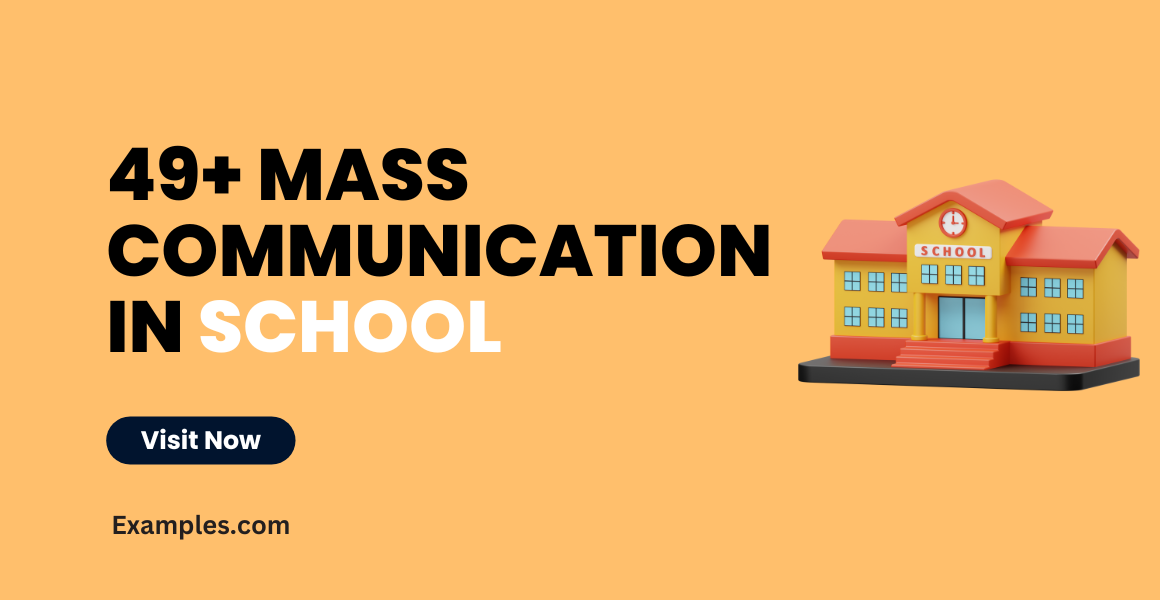Mass Communication in School
Delve into the world of ‘Mass Communication in School’ with this comprehensive guide. Tailored for educators, students, and academic professionals, it explores how mass communication techniques can be effectively integrated into educational settings. From school news broadcasts to digital classroom interactions, discover how effective communication strategies can enhance learning experiences. This guide provides insights into leveraging communication technology and media literacy to foster a more engaging and informed school environment.
Mass Communication in School Examples
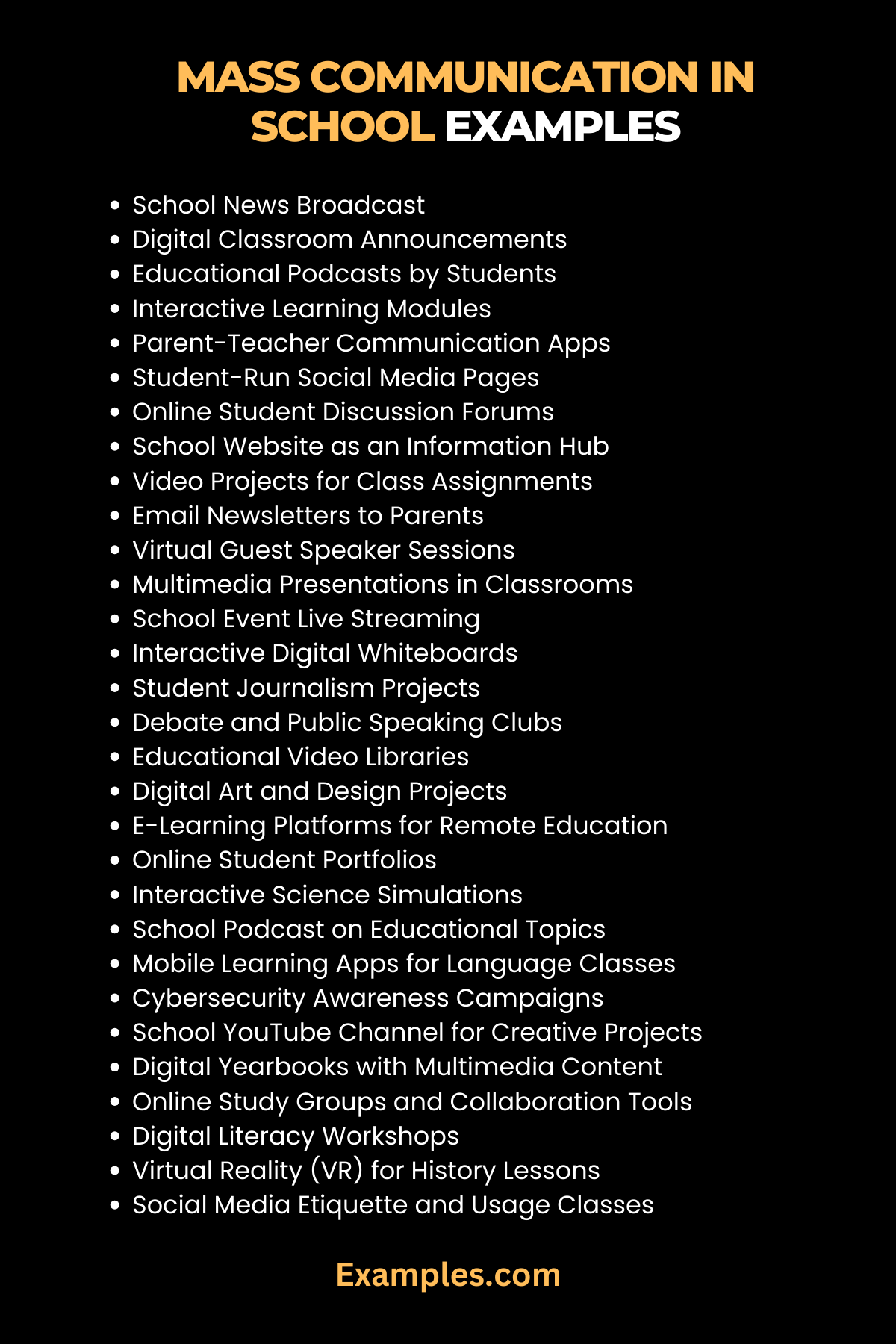
- School News Broadcast: Students create a daily or weekly news broadcast, sharing school news, weather, and special events.
Example: “Welcome to the Eagle News Network, bringing you today’s top stories from Lincoln High School.” - Digital Classroom Announcements: Teachers use digital platforms to send out class announcements, homework reminders, and educational resources
Example: “Don’t forget to review the posted materials on our class portal before tomorrow’s test.” - Educational Podcasts by Students: Students create podcasts discussing various educational topics, projects, or book reviews.
Example: “In this episode of History Buffs, we dive into the fascinating world of ancient Egypt.” - Interactive Learning Modules: Teachers utilize interactive digital modules for subjects like science and history to enhance engagement.
Example: “Today, we’ll explore the solar system through our interactive virtual module.” - Parent-Teacher Communication Apps: Schools use dedicated apps for streamlined communication between teachers and parents.
Example: “Mrs. Smith updated the app with photos from today’s science fair.” - Student-Run Social Media Pages: Students manage school social media pages, highlighting achievements, events, and daily activities.
Example: “Check out our Instagram page for highlights from today’s basketball victory!” - Online Student Discussion Forums: Platforms for students to discuss assignments, share ideas, and collaborate on projects
Example: “Let’s brainstorm ideas for the group project in our online forum tonight.” - School Website as an Information Hub: The school website serves as a central hub for news, resources, and event information.
Example: “Visit our school website for the latest updates on the arts festival.” - Video Projects for Class Assignments: Students create video projects for subjects, enhancing learning and creativity
Example: “For this assignment, create a short video explaining your science project.” - Email Newsletters to Parents: Schools send out regular email newsletters to keep parents informed about school activities and news.
Example: “Our monthly newsletter features important school dates, student achievements, and upcoming events.” - Virtual Guest Speaker Sessions: Invite experts via video conferencing to speak on various topics, enriching students’ learning experience.
Example: “Join us for a virtual session with a renowned scientist discussing climate change.” - Multimedia Presentations in Classrooms: Students use tools like PowerPoint or Prezi to create engaging presentations for class assignments.
Example: “For your history assignment, create a multimedia presentation about your chosen historical figure.” - School Event Live Streaming: Stream school events like plays, concerts, or sports games online for broader community engagement.
Example: “Tune in to our live stream tonight to watch the school play from anywhere!” - Interactive Digital Whiteboards: Use digital whiteboards for interactive teaching, allowing real-time collaboration and participation.
Example: “Let’s solve this math problem together on the digital whiteboard.” - Student Journalism Projects: Encourage students to research and write articles on school or local community topics.
Example: “As part of our journalism project, students will write articles for the school newsletter.”
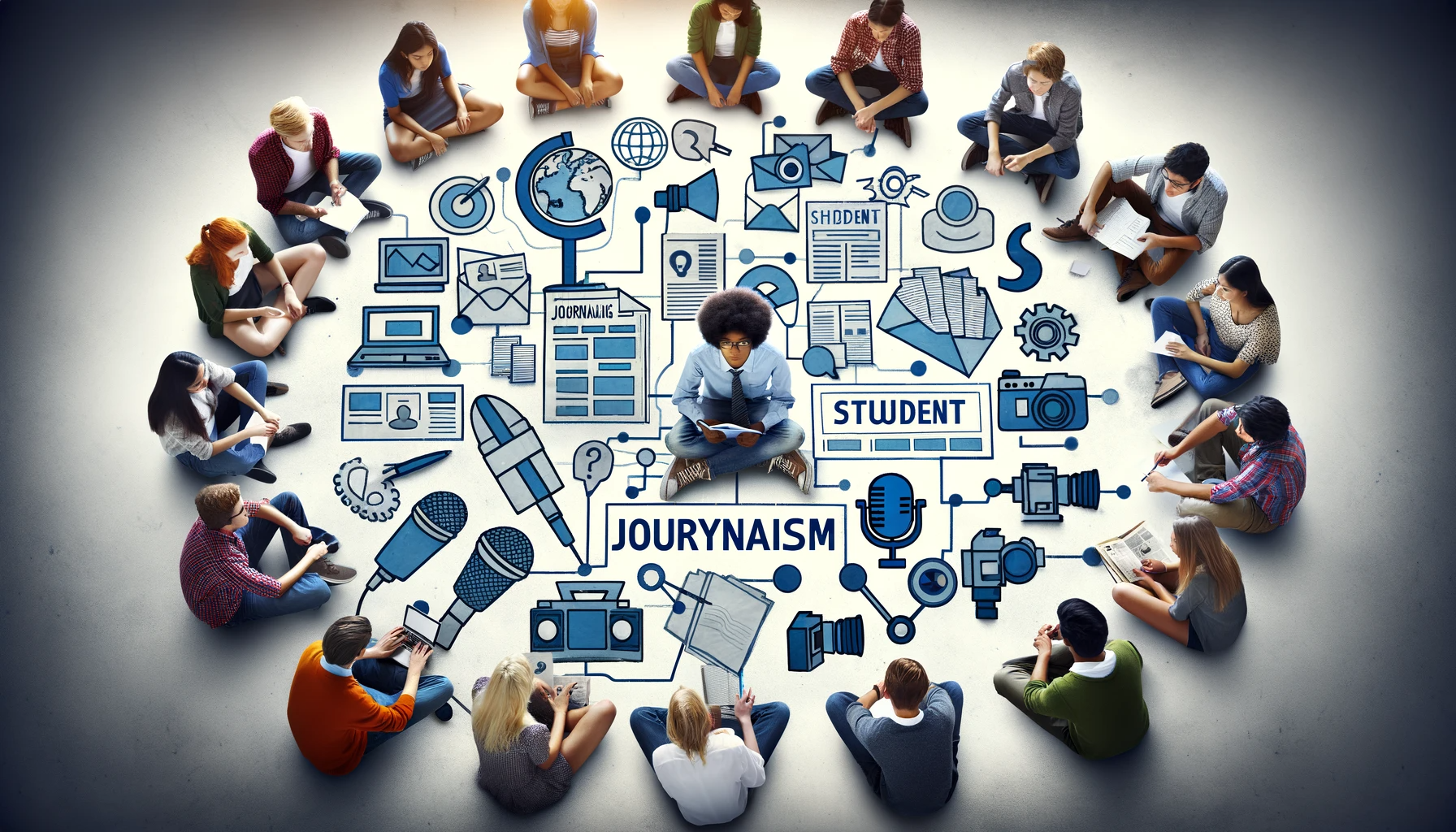
- Debate and Public Speaking Clubs: Foster public speaking skills through school clubs, focusing on debate and speech.
Example: “This week’s debate club topic will be ‘The Impact of Social Media on Youth’.” - Educational Video Libraries: Create or curate video libraries as resources for various subjects and projects.
Example: “Refer to our online video library for additional materials on World War II.” - Digital Art and Design Projects: Integrate digital tools into art classes, allowing students to create digital artwork or designs.
Example: “Use graphic design software to create your own digital art piece for the gallery display.” - E-Learning Platforms for Remote Education: Utilize e-learning platforms for delivering lessons and resources, especially beneficial for remote learning.
Example: “Log into the e-learning platform to access this week’s science lessons and quizzes.” - Online Student Portfolios: Students create digital portfolios to showcase their work and progress throughout the year.
Example: “Build your online portfolio with examples of your best essays and projects.” - Interactive Science Simulations: Use online simulations for subjects like physics or chemistry, enhancing understanding through virtual experiments.
Example: “Complete the virtual lab simulation to see chemical reactions in action.” - School Podcast on Educational Topics: A school podcast featuring discussions on various educational topics, interviews with teachers, and student achievements.
Example: “This week’s podcast episode features our science teacher discussing innovative teaching methods.” - Mobile Learning Apps for Language Classes: Implement mobile apps to facilitate language learning with interactive exercises and games.
Example: “Use the Duolingo app to practice your Spanish vocabulary daily.” - Cybersecurity Awareness Campaigns: Run campaigns and workshops to educate students about online safety and cybersecurity.
Example: “Join our webinar on cybersecurity to learn how to stay safe online.” - School YouTube Channel for Creative Projects: A YouTube channel showcasing student-created videos, ranging from academic projects to creative arts.
Example: “Our school’s YouTube channel just uploaded student-created short films – check them out!” - Digital Yearbooks with Multimedia Content: Create digital yearbooks that include photos, videos, and interactive content.
Example: “This year’s digital yearbook will feature a video montage of school highlights.” - Online Study Groups and Collaboration Tools: Use platforms like Google Classroom or Microsoft Teams for group study and project collaboration
Example: “Our group will meet on Teams to work on our science project collaboration.” - Digital Literacy Workshops: Conduct workshops to improve students’ skills in navigating and utilizing digital tools effectively.
Example: “Attend our digital literacy workshop to learn about using online research tools.”
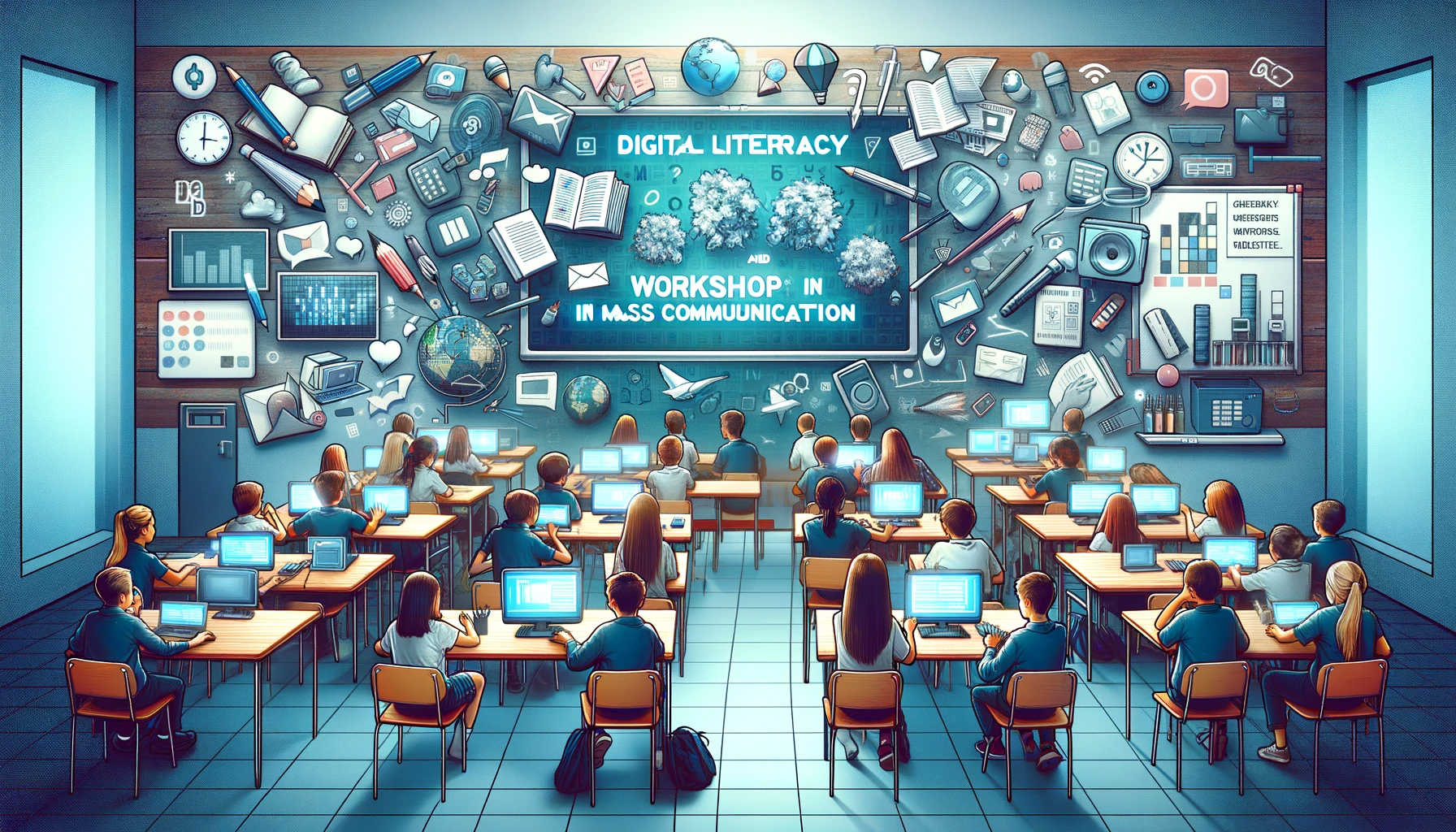
- Virtual Reality (VR) for History Lessons: Implement VR technology to create immersive experiences for history or geography lessons.
Example: “Experience ancient Rome through a VR tour in our next history class.” - Social Media Etiquette and Usage Classes: Educate students on responsible and ethical use of social media platforms.
Example: “Our next class will cover social media etiquette and how to use it responsibly.”
What is Mass Communication in School?
Mass communication in school refers to the practice and implementation of various communication techniques and mediums to disseminate information, educate, and engage students, teachers, and the broader school community. This concept goes beyond traditional classroom teaching methods, embracing a more inclusive and wide-reaching approach to communication and information sharing.
In the educational context, mass communication involves the use of diverse media channels such as school radio stations, newsletters, digital platforms, and social media to create an interactive, informative, and inclusive environment. This approach aids in:
- Enhancing Educational Delivery: By integrating multimedia tools and digital platforms, mass communication in schools provides dynamic and interactive ways to deliver educational content, making learning more engaging and accessible.
- Improving School Communication: It streamlines the flow of information between the school, students, and parents. This can range from daily announcements and event updates to educational resources and emergency alerts.
- Fostering Community Engagement: Mass communication helps in building a sense of community within the school. It encourages participation and feedback from students and parents, creating a more connected and interactive school culture.
- Developing Student Skills: It provides students with opportunities to develop critical skills such as digital literacy, public speaking, content creation, and media awareness. Participation in mass communication activities like school broadcasts or digital content creation equips students with valuable real-world skills.
- Promoting Extracurricular Activities: Schools can use mass communication to promote and highlight extracurricular activities, achievements of students and staff, and important school events, thereby boosting participation and school spirit.
- Creating Informed Citizens: By teaching students how to consume and produce media responsibly, schools play a vital role in shaping informed, media-literate individuals who can navigate the complexities of the modern information landscape.
What are the Activities of Mass Communication in School?
Mass communication in schools encompasses a variety of activities aimed at enhancing students’ communication skills, media literacy, and understanding of the digital world. These activities are designed to prepare students for a future where digital communication and media play a pivotal role. This guide explores the various activities that constitute mass communication in educational settings, highlighting how they contribute to the overall development of students.
School News and Broadcasting
- Student-Run News Shows: Students create and broadcast their own news programs, covering school events, sports, and local stories, providing practical experience in journalism and broadcasting.
- Radio Broadcasting: Schools may have their own radio stations where students learn to manage shows, handle equipment, and produce content, gaining hands-on experience in radio broadcasting.
Digital and Social Media Projects
- Social Media Management: Students engage in running and managing school social media pages, learning about content creation, digital marketing, and online community management.
- Blogging and Online Journalism: Writing blogs or online articles allows students to develop writing skills, understand web publishing, and learn about engaging an online audience.
Multimedia Production
- Video Production Projects: Creating videos for class projects or school channels provides students with skills in videography, editing, and storytelling through visual media.
- Podcast Creation: Producing podcasts on various topics helps students develop skills in a editing, scriptwriting, and oral communication.
Interactive Learning
- Webinars and Virtual Guest Speakers: Hosting webinars or virtual talks with guest speakers from different fields expands students’ horizons and offers exposure to diverse perspectives.
- Online Discussion Forums: Facilitating online forums for class discussions or book clubs encourages students to engage in thoughtful dialogue and develop digital communication skills.
Media Literacy Education
- Media Literacy Workshops: Workshops on media literacy educate students about discerning the reliability of sources, understanding media biases, and being critical consumers of information.
- Digital Citizenship Classes: Teaching digital citizenship helps students understand the ethics, responsibilities, and safety aspects of navigating the digital world.
Creative Expression and Collaboration
- Digital Art and Design: Encouraging students to explore digital art and design fosters creativity and introduces them to tools and software used in graphic design.
- Collaborative Online Projects: Engaging in collaborative projects using digital tools enhances teamwork skills and exposes students to collaborative software and platforms.
What are the Benefits of Mass Communication in School?
Mass communication in schools offers a multitude of benefits that significantly enhance the educational experience for students and educators alike. By integrating various forms of mass media into the learning environment, schools can foster a more dynamic, interactive, and inclusive educational landscape. This comprehensive guide explores the key advantages of incorporating mass communication strategies in school settings.
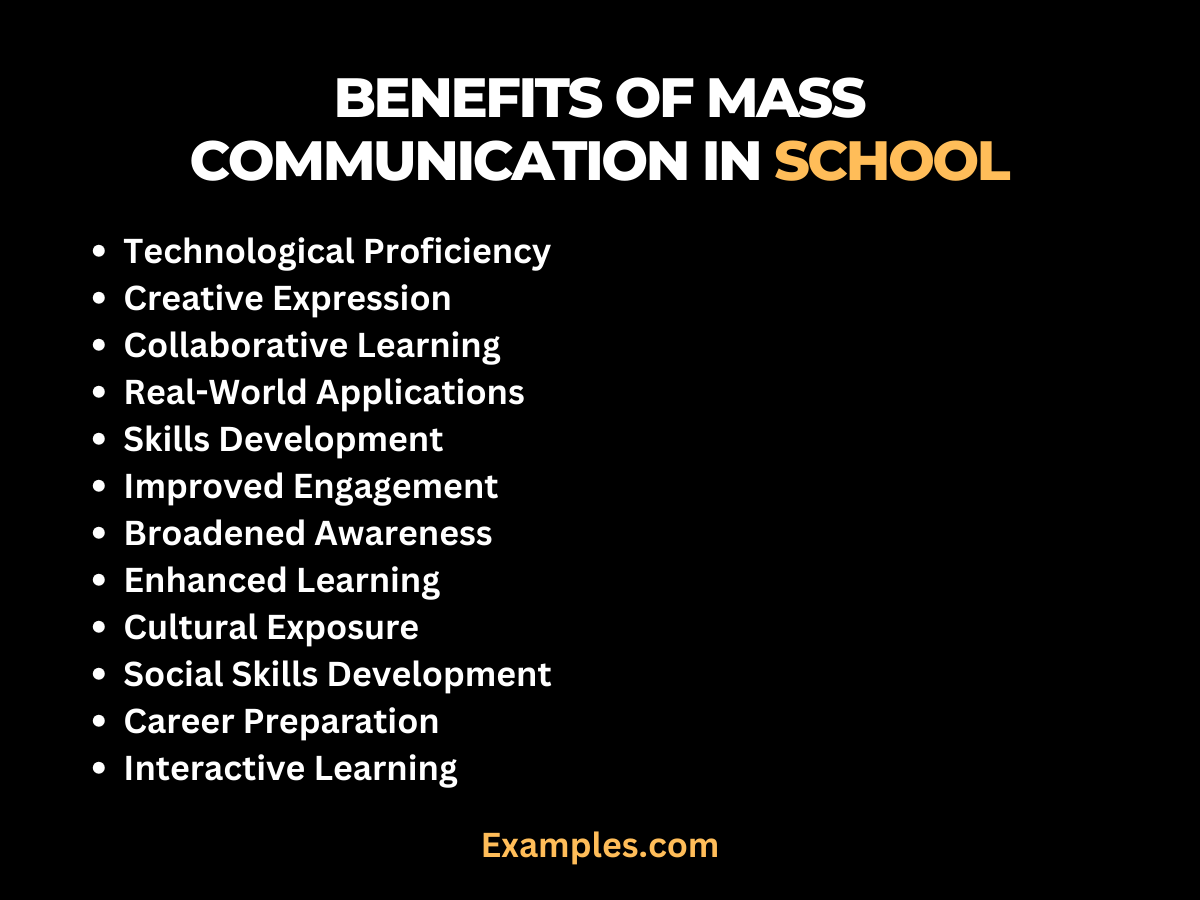
Enhanced Learning Experiences
- Diverse Educational Resources: Mass communication tools provide access to a wide array of educational resources, including videos, podcasts, and interactive modules, enriching the learning material available to students.
- Engaging Teaching Methods: Incorporating media like digital whiteboards, educational apps, and online platforms makes learning more engaging and interactive, catering to different learning styles.
Improved Communication Skills
- Development of Digital Literacy: Regular use of mass communication tools helps students develop essential digital literacy skills, preparing them for the digitalized world.
- Enhancement of Public Speaking and Presentation Skills: Participation in activities like school broadcasts and digital presentations hones students’ public speaking and presentation abilities.
Increased Accessibility
- Remote Learning Opportunities: Mass communication facilitates remote learning, ensuring educational continuity and accessibility for students unable to attend in person.
- Inclusivity for Diverse Learning Needs: Digital tools can provide tailored learning experiences for students with diverse educational needs, promoting inclusivity.
Fostering Creativity and Collaboration
- Encouragement of Creative Expression: Media projects like video production or podcasting allow students to express their creativity and innovate.
- Collaborative Learning Environments: Mass communication platforms enable collaboration on projects and assignments, fostering teamwork and cooperative skills.
Broadening Perspectives
- Global Awareness and Connectivity: Exposure to global news and events through mass media helps students develop a broader understanding of the world.
- Cultural Exchange and Understanding: Multimedia content can introduce students to diverse cultures and perspectives, promoting cultural awareness and sensitivity.
Building Community and Engagement
- Strengthening School Community: School news broadcasts and digital newsletters can create a strong sense of community among students, staff, and parents.
- Parental Involvement and Communication: Tools like school apps and digital platforms enhance communication between the school and parents, keeping them informed and involved.
Preparing for the Future
- Career Readiness: Familiarity with mass communication tools prepares students for modern workplaces where digital communication is prevalent.
- Media Literacy and Critical Thinking: Educating students about media literacy encourages critical thinking about the information they consume and share.
Tips for Using Mass Communication in School?
- Integrate with Curriculum: Align mass communication tools with the educational curriculum to enhance learning outcomes and relevance.
- Encourage Media Literacy: Teach students to critically analyze media content, understanding its purpose, message, and impact.
- Promote Interactive Learning: Use interactive media like podcasts, videos, and social media to engage students actively in their learning process.
- Ensure Age-Appropriate Content: Select media content that is suitable for the students’ age group, considering both educational value and appropriateness.
- Leverage Diverse Media Formats: Utilize a mix of media formats (a, visual, digital) to cater to different learning styles and preferences.
- Foster Global Awareness: Use mass communication to connect students with global issues and perspectives, broadening their worldview.
- Implement Safe Online Practices: Educate students about safe and responsible use of digital media and online platforms.
- Encourage Student Participation: Involve students in creating media content, such as school news broadcasts or digital storytelling projects.
- Use as a Collaboration Tool: Employ mass communication for collaborative projects, encouraging teamwork and shared learning.
- Incorporate Feedback Mechanisms: Utilize interactive media for quizzes, surveys, and discussions to provide instant feedback and engagement.
- Support Diverse Learning Needs: Utilize media to support students with different learning needs, offering alternative ways to access and engage with content.
- Monitor and Evaluate Use: Regularly monitor and assess the effectiveness of media use in education, adjusting strategies as needed.
- Balance with Traditional Methods: Combine mass communication tools with traditional teaching methods for a balanced educational approach.
- Utilize as an Administrative Tool: Use mass communication for school announcements, parent-teacher communication, and event promotions.
- Teach Ethical Media Use: Educate students about the ethical aspects of media production and consumption, including copyright laws and content creation.
Incorporating mass communication in schools offers a multifaceted approach to education, significantly enriching the learning experience. It not only enhances engagement and broadens awareness among students but also fosters critical thinking, technological proficiency, and global connectivity. By integrating various media tools and platforms, schools can provide a more dynamic, inclusive, and interactive learning environment. This approach prepares students not just academically but also equips them with essential life skills, making them well-rounded individuals ready to engage with and contribute to the wider world.



